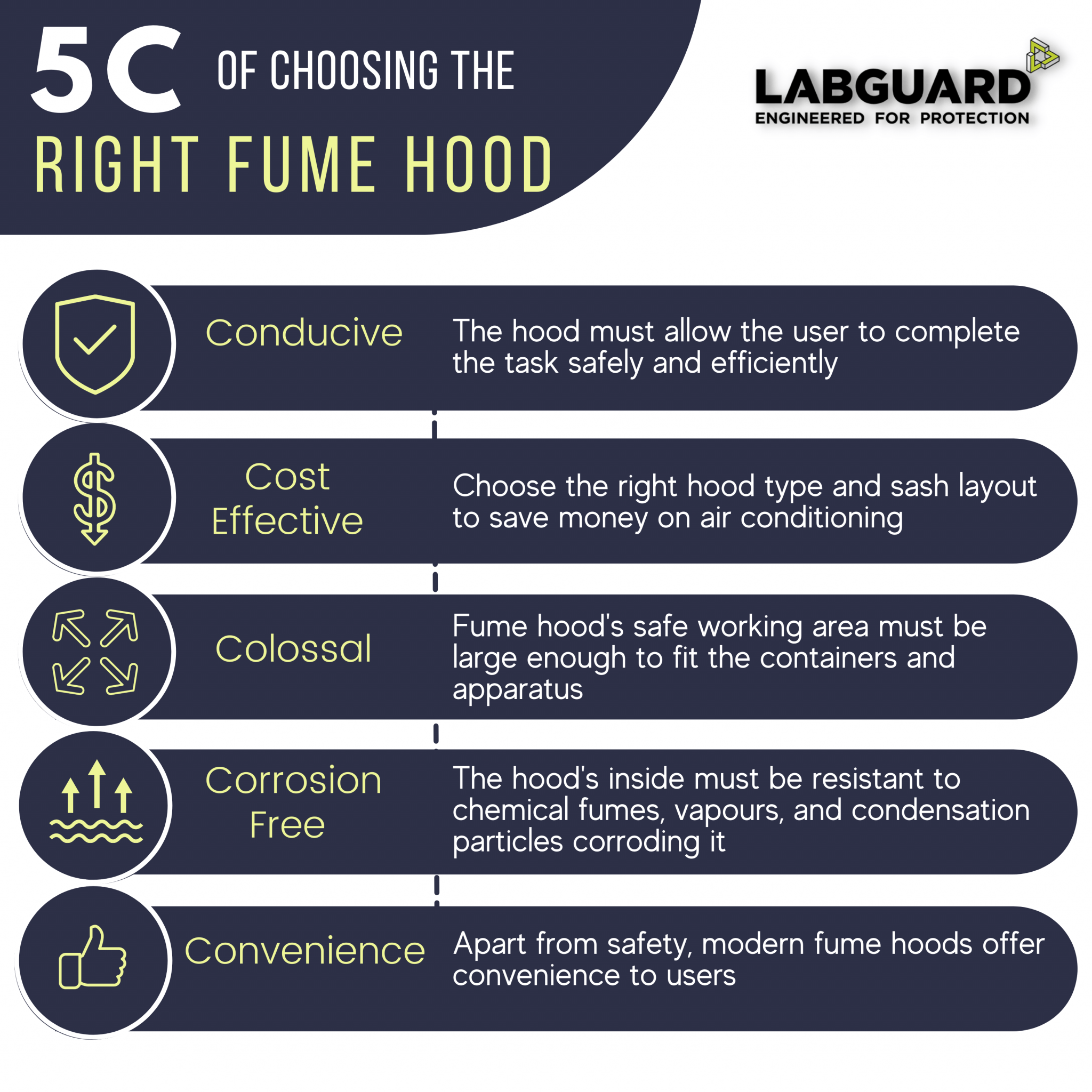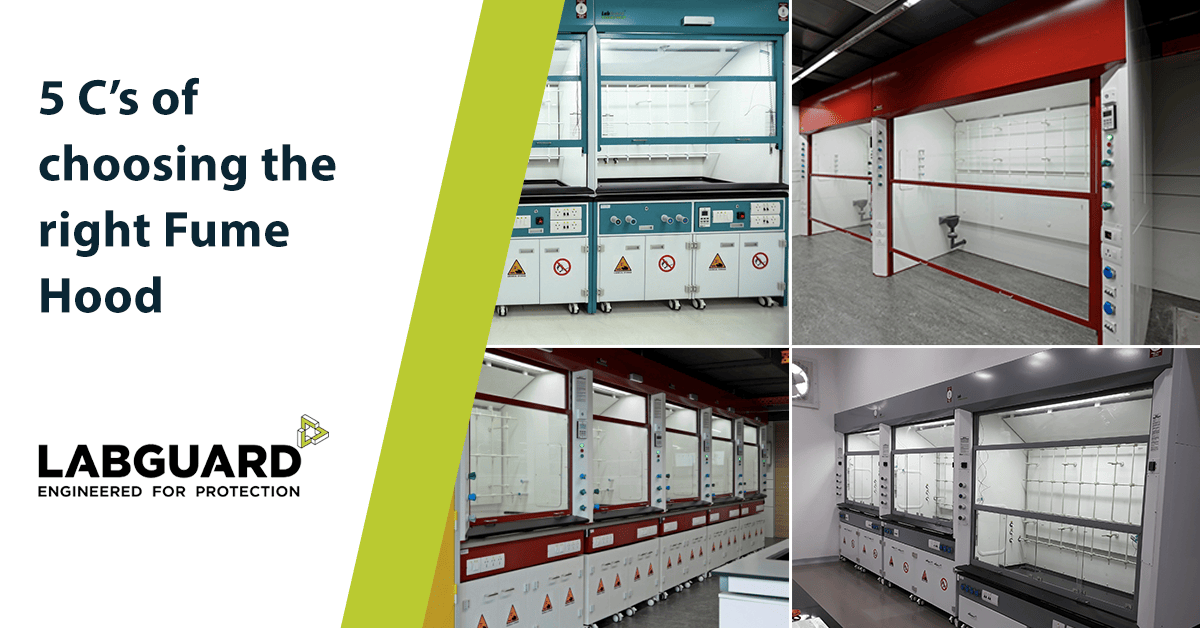Routinely, scientists and researchers work in an environment that contains airborne chemical contaminants. The sources of these contaminants could be chemical powders, hazardous chemicals, odors, VOCs, and gases. The safety of lab users and the lab environment is the paramount responsibility of the organization hosting modern laboratory workspaces.
Fume hoods offer the most efficient and reliable engineering solution to these challenges and are commonplace sightings in laboratories. However, choosing the right fume hood could be a challenge in itself. Fume hoods come in a wide range of types, specifications, standards, features, sizes, etc. making the task of selecting the right one even harder.
Need of Fume hood
A chemical laboratory fume hood is the most prevalent local exhaust ventilation system used in labs and remains the principal approach in limiting the ingestion of airborne chemical contaminants. A fume Hood confines hazardous airborne material, first diluting it with a large volume of air, drawing it through an exhaust system, and safely venting it out of the laboratory building. Fume Hood keeps the users and the lab environment safe and healthy. It also protects the users from unintended spills, splatter, fire, and minor explosions that could take place in course of the work.
Fume hoods provide enhanced safety to users when used appropriately. Understanding the fume hood design & working, SOPs, limitations, maintenance practices will ensure user safety in laboratory workspaces.

Choosing the Right Fume hood
Here are 5 C’s of considerations to help you choose the right fume hood for your lab.
1. Containment:
The primary function of a fume hood is to safely contain and exhaust airborne chemical contaminants. Users must never be caught off guard about the safety status of a fume hood. Factors influencing the safety offered by a fume hood could be fume hood design, materials of construction, sash positions, containment & exhaust efficiency, user-friendly features, etc. International accreditation organizations (SEFA, ASHRAE, ANSI, UL, NFPA, etc.) define standards about safety and quality. It is always a good idea to select fume hoods that have the greatest level of safety. Fume hoods should not only conform to but also comply with standards.
2. Cost-Effective:
A laboratory might consume 5/7 times more energy than a comparable office space. Fume hoods consume a lot of energy themselves and might even contribute to the HVAC costs unless they are efficient. Not only the cost of procurement but also the cost of running a fume hood is important. Hence an optimal solution must be selected in consultation with the stakeholders. Just considering low procurement cost might turn out to be an over-expensive proposition in the long run.
3. Conducive:
The fume hood must facilitate the experimentation. Its useable area (6” behind the sash plane) must be large enough to accommodate equipment setups. Containers and additional instruments must be able to move freely in and out of the hood. The worktop must contain and dispose of spills. The sash must be openable to a height such that movement of material is unhampered. For taller setups, a low bench fume hood must be selected. For bulky equipment, there are walk-in fume hoods and bespoke ventilation enclosures. If portability is a consideration, ductless (recirculating) hoods are available.
4. Corrosion Free
The interiors of a fume hood must be well resistant to fumes, vapors, and condensation matter that could gather inside. Of course, a good aerodynamic design will ensure maximum ventilation and no accumulation. Airfoil should be in stainless steel. Superior fume hoods use quality lining material and corrosion-resistant components. Superior work table options (Molded Epoxy etc.) for higher corrosion protection are also available. If needed, MOC like Polypropylene could be considered for demanding applications.
5. Convenience:
Modern fume hoods offer ergonomic designs. Accessories and features that enhance user convenience such as special-purpose base cabinets, base cabinets on castors, special light fixtures, Airflow monitors, Equipment holding grids, utility fittings, Cup sinks, instrumentation, electrical receptacles, etc. must be evaluated. some energy-saving features such as automatic sash closers could also be considered. Users must clearly define their requirements and the selection should address those needs.
Selection and procurement of fume hood(s) is a collaborative project, that begins with clearly defined URS (User Requirement Specifications). All stakeholders such as users, engineering, projects, and procurement teams must be a part of this collaborative project. We at Labguard are ever willing to offer all help by deploying our expertise and resources. Do get in touch with us at an early stage of your project.


